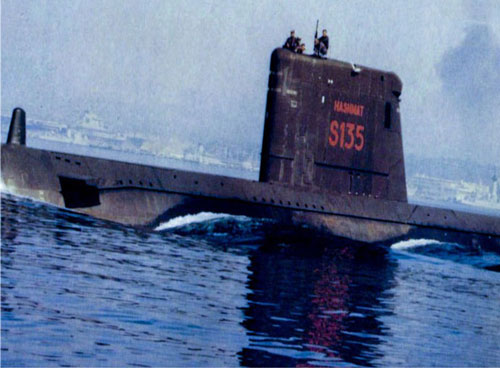Baber Ali Bhatti
HANGOR Day is celebrated on the 9th of December with zeal and enthusiasm to pay homage to the brave war veterans who transformed the battle outlook at sea with incredible maneuvering of one submarine. The name of submarine was HANGOR, therefore; 9 December referred to as HANGOR Day which is reminiscent of indefatigable commitment and unparallel courage of Pakistan Navy. Pakistan’s submarine HANGOR under the command of the Commander Ahmed Tasnim later Vice Admiral outmaneuvered India’s ships in 1971 War by sinking the Indian Navy ASW Frigate INS KHUKRI and crippling INS KIRPAN.The battlefield at sea was 30 miles southeast off ‘Diu Head’ where the spectacular war action took place. This war action is accentuated in naval history and hailed as being the first ever kill by a conventional submarine after World War-II. HANGOR submarine till to date remains on the honour lists as the only conventional submarine in the world to have achieved such a distinction.
HANGOR’S sensors detected a number of radar transmissions from the direction of Bombay harbor on the 2nd of December 1971 and those transmissions were evaluated and assessed to be of Indian warships. The submarine’s quick sweep with radar and periscope revealed that the formation consisted of 6 escorts screening a main body of four ships. That was undoubtedly the Indian Western Fleet, comprising cruiser INS Mysore with supporting auxiliaries. At that time, East Pakistan had become the center of all-out war but hostilities had not yet broken out in the West. Therefore, HANGOR could not attack these ships as the war had not started.
It was reported that Indian navy envisaged the plan of 3rd attack on Karachi harbor. However, the plan could not be executed due to Hangor sinking of Khukri. The mere presence of HANGOR in Indian waters made the enemy fearful of possible submarine attack and consequently the Indian Fleet split up and moved so far south that it was no longer in a position to execute its envisaged attack plans. Captain Amir Iqbal in his article described, “PNS/M HANGOR continued her patrol and in an effort to locate the evasive enemy, she extended her patrol northwards to investigate some intercepted radio transmissions. Consequently, when she was off the Kathiawar coast in the early hours of 9 December; two contacts were picked up on her passive sonar on a north-easterly bearing. They were identified as warships by their sonar transmissions and were at a radar range of 6 to 8 miles. The two contacts were appreciated to be two anti-submarine frigates engaged in SAU (Search and Attack Unit) operations doing a rectangular anti-submarine search and thus a pursuit of the enemy began”. However, HANGOR was not detected by sonar and enjoyed the element of surprise. HANGOR continued her approach and after securing a good target, it commenced the attack by firing one homing torpedo “down the throat” at the more northerly target INS Kirpan. The torpedo could not acquire the desired target.
However, the HANGOR crew kept their nerves cool and shifted the target to KHUKRI and fired the second torpedo at it. The torpedo achieved “lock on” and went straight for the target, passed under it and exploded under the keel thus breaking the keel of INS KHUKRI which sank in a matter of two minutes, with all hands on board. 18 officers and 176 sailors including the Commanding Officer lost their lives and this came as a shattering blow to the Indian Navy. Hangor’s crew prepared a third torpedo firing solution for INS KIRPAN which ultimately hit her and rendered her badly damaged and non-ops.
Immediately, Indian Navy launched Operation Falcon and carried out massive anti-submarines efforts including deployment of anti-submarine ships, shore-based surveillance aircraft, Alize (Specialized anti-submarine naval aircraft) and Sea King anti-submarine helicopters in HUK Groups (Hunter-KillerGroups) to hunt down HANGOR. Nevertheless, HANGOR crew remained steadfast and reached Karachi on the 18th of December. The significance of HANGOR Day manifests the fact that a submarine evasion after an attack is more challenging and complicated than the attack itself due to various inherent conventional submarine limitations, predominantly of which is the submerged endurance. However, HANGOR crew deployed the pinnacle of their skills for successful maneuvering and return back safely. This Day marks the achievement of the Pakistan Navy in the history of naval warfare.
The nation will always salute Vice-Admiral Tasnim Ahmed and his crew for the valour act and heroism in 1971Pakistan-India War.










